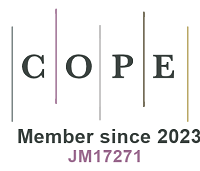REFERENCES
1. Kissa E. Fluorinated surfactants and repellents (Vol. 97); 2001. New York: Marcel Dekker, Inc.
2. Moody CA, Field JA. Perfluorinated surfactants and the environmental implications of their use in fire-fighting foams. Environ Sci Technol 2000;34:3864-70.
3. Lanza HA, Cochran RS, Mudge JF, et al. Temporal monitoring of perfluorooctane sulfonate accumulation in aquatic biota downstream of historical aqueous film forming foam use areas. Environ Toxicol Chem 2017;36:2022-9.
4. de Vries P, Slijkerman DME, Kwadijk CJAF, et al. The toxic exposure of flamingos to per- and Polyfluoroalkyl substances (PFAS) from firefighting foam applications in Bonaire. Mar Pollut Bull 2017;124:102-11.
5. Navarro I, de la Torre A, Sanz P, et al. Uptake of perfluoroalkyl substances and halogenated flame retardants by crop plants grown in biosolids-amended soils. Environ Res 2017;152:199-206.
6. Evich MG, Davis MJB, McCord JP, et al. Per- and polyfluoroalkyl substances in the environment. Science 2022;375:eabg9065.
7. Wickham GM, Shriver TE. Emerging contaminants, coerced ignorance and environmental health concerns: the case of per- and polyfluoroalkyl substances (PFAS). Sociol Health Illn 2021;43:764-78.
8. Washington JW, Rosal CG, McCord JP, et al. Nontargeted mass-spectral detection of chloroperfluoropolyether carboxylates in New Jersey soils. Science 2020;368:1103-7.
10. Ankley GT, Cureton P, Hoke RA, et al. Assessing the ecological risks of per- and polyfluoroalkyl substances: current state-of-the science and a proposed path forward. Environ Toxicol Chem 2021;40:564-605.
11. Lindstrom AB, Strynar MJ, Libelo EL. Polyfluorinated compounds: past, present, and future. Environ Sci Technol 2011;45:7954-61.
12. Jia S, Marques Dos Santos M, Li C, Snyder SA. Recent advances in mass spectrometry analytical techniques for per- and polyfluoroalkyl substances (PFAS). Anal Bioanal Chem 2022;414:2795-807.
13. Glüge J, Scheringer M, Cousins IT, et al. An overview of the uses of per- and polyfluoroalkyl substances (PFAS). Environ Sci Process Impacts 2020;22:2345-73.
14. ARPAV; 2019. Agenzia Regionale per la Prevenzione e Protezione Ambientale del Veneto. Il composto cC6O4 nel Po.
15. ARPAV; 2020. Agenzia Regionale per la Prevenzione e Protezione Ambientale del Veneto. Sostanze perfluoro alchiliche (PFAS).
16. Morganti M, Polesello S, Pascariello S, et al. Exposure assessment of PFAS-contaminated sites using avian eggs as a biomonitoring tool: a frame of reference and a case study in the Po River valley (Northern Italy). Integr Environ Assess Manag 2021;17:733-45.
17. ECHA; 2019. European chemicals agency: difluoro{[2,2,4,5-tetrafluoro-5-(trifluoromethoxy)-1,3-dioxolan-4-yl]oxy}acetic acid.
18. Ng C, Cousins IT, DeWitt JC, et al. Addressing urgent questions for PFAS in the 21st century. Environ Sci Technol 2021;55:12755-65.
19. Podder A, Sadmani AHMA, Reinhart D, Chang NB, Goel R. Per and poly-fluoroalkyl substances (PFAS) as a contaminant of emerging concern in surface water: a transboundary review of their occurrences and toxicity effects. J Hazard Mater 2021;419:126361.
20. Bernardini I, Matozzo V, Valsecchi S, et al. The new PFAS C6O4 and its effects on marine invertebrates: first evidence of transcriptional and microbiota changes in the Manila clam Ruditapes philippinarum. Environ Int 2021;152:106484.
21. Fabrello J, Ciscato M, Masiero L, et al. New compounds, old problems. The case of C6O4 - a substitute of PFOA - and its effects to the clam Ruditapes philippinarum. J Hazard Mater 2021;420:126689.
22. Fabrello J, Targhetta F, Ciscato M, et al. First evidence of in vitro effects of C6O4 - a substitute of PFOA-on haemocytes of the clam Ruditapes philippinarum. Toxics 2021;9:191.
23. Lopez-Antia A, Groffen T, Lasters R, et al. Perfluoroalkyl acids (PFAAs) concentrations and oxidative status in two generations of great tits inhabiting a contamination hotspot. Environ Sci Technol 2019;53:1617-26.
24. Lopez-Antia A, Dauwe T, Meyer J, Maes K, Bervoets L, Eens M. High levels of PFOS in eggs of three bird species in the neighbourhood of a fluoro-chemical plant. Ecotoxicol Environ Saf 2017;139:165-71.
25. Blévin P, Angelier F, Tartu S, et al. Perfluorinated substances and telomeres in an Arctic seabird: cross-sectional and longitudinal approaches. Environ Pollut 2017;230:360-7.
26. Custer CM, Custer TW, Delaney R, Dummer PM, Schultz S, Karouna-Renier N. Perfluoroalkyl contaminant exposure and effects in tree swallows nesting at clarks marsh, Oscoda, Michigan, USA. Arch Environ Contam Toxicol 2019;77:1-13.
27. Valsecchi S, Rusconi M, Mazzoni M, et al. Occurrence and sources of perfluoroalkyl acids in Italian river basins. Chemosphere 2015;129:126-34.
28. Hoff PT, Van Campenhout K, Van de Vijver K, et al. Perfluorooctane sulfonic acid and organohalogen pollutants in liver of three freshwater fish species in Flanders (Belgium): relationships with biochemical and organismal effects. Environ Pollut 2005;137:324-33.
29. Lopez-Antia A, Kavelaars MM, Müller W, Bervoets L, Eens M. Understanding PFAAs exposure in a generalist seabird species breeding in the vicinity of a fluorochemical plant: Influence of maternal transfer and diet. Environ Pollut 2021;271:116355.
30. Rusconi M, Marziali L, Stefani F, et al. Evaluating the impact of a fluoropolymer plant on a river macrobenthic community by a combined chemical, ecological and genetic approach. Sci Total Environ 2015;538:654-63.
32. Green RH. Sampling design and statistical methods for environmental biologists. New York: John Wiley & Sons; 1979.
33. Hoff PT, Scheirs J, Van de Vijver K, et al. Biochemical effect evaluation of perfluorooctane sulfonic acid-contaminated wood mice (Apodemus sylvaticus). Environ Health Perspect 2004;112:681-6.
34. D’Hollander W, De Bruyn L, Hagenaars A, de Voogt P, Bervoets L. Characterisation of perfluorooctane sulfonate (PFOS) in a terrestrial ecosystem near a fluorochemical plant in Flanders, Belgium. Environ Sci Pollut Res Int 2014;21:11856-66.
35. Greaves AK, Letcher RJ, Sonne C, Dietz R, Born EW. Tissue-specific concentrations and patterns of perfluoroalkyl carboxylates and sulfonates in East Greenland polar bears. Environ Sci Technol 2012;46:11575-83.
36. Hoff PT, Van de Vijver K, Dauwe T, et al. Evaluation of biochemical effects related to perfluorooctane sulfonic acid exposure in organohalogen-contaminated great tit (Parus major) and blue tit (Parus caeruleus) nestlings. Chemosphere 2005;61:1558-69.
37. Dauwe T, Van de Vijver K, De Coen W, Eens M. PFOS levels in the blood and liver of a small insectivorous songbird near a fluorochemical plant. Environ Int 2007;33:357-61.
38. Groffen T, Lopez-Antia A, D’Hollander W, Prinsen E, Eens M, Bervoets L. Perfluoroalkylated acids in the eggs of great tits (Parus major) near a fluorochemical plant in Flanders, Belgium. Environ Pollut 2017;228:140-8.
39. Custer CM, Custer TW, Dummer PM, et al. Legacy and contaminants of emerging concern in tree swallows along an agricultural to industrial gradient: Maumee River, Ohio. Environ Toxicol Chem 2020;39:1936-52.
40. Groffen T, Lasters R, Lopez-Antia A, Prinsen E, Bervoets L, Eens M. Limited reproductive impairment in a passerine bird species exposed along a perfluoroalkyl acid (PFAA) pollution gradient. Sci Total Environ 2019;652:718-28.
41. Davis KL, Aucoin MD, Larsen BS, Kaiser MA, Hartten AS. Transport of ammonium perfluorooctanoate in environmental media near a fluoropolymer manufacturing facility. Chemosphere 2007;67:2011-9.
42. Cui Q, Pan Y, Zhang H, et al. Occurrence and tissue distribution of novel perfluoroether carboxylic and sulfonic acids and legacy per/polyfluoroalkyl substances in black-spotted frog (pelophylax nigromaculatus). Environ Sci Technol 2018;52:982-90.
43. Lin H, Liu Z, Yang H, et al. Per- and polyfluoroalkyl substances (PFASs) impair lipid metabolism in rana nigromaculata: a field investigation and laboratory study. Environ Sci Technol 2022;56:13222-32.
44. Groffen T, Eens M, Bervoets L. Do concentrations of perfluoroalkylated acids (PFAAs) in isopods reflect concentrations in soil and songbirds? Sci Total Environ 2019;657:111-23.
45. Zhu H, Kannan K. Distribution and partitioning of perfluoroalkyl carboxylic acids in surface soil, plants, and earthworms at a contaminated site. Sci Total Environ 2019;647:954-61.
46. Buffagni A, Erba S, Furse MT. A simple procedure to harmonize class boundaries of assessment systems at the pan-European scale. Environ Sci Policy 2007;10:709-24.







